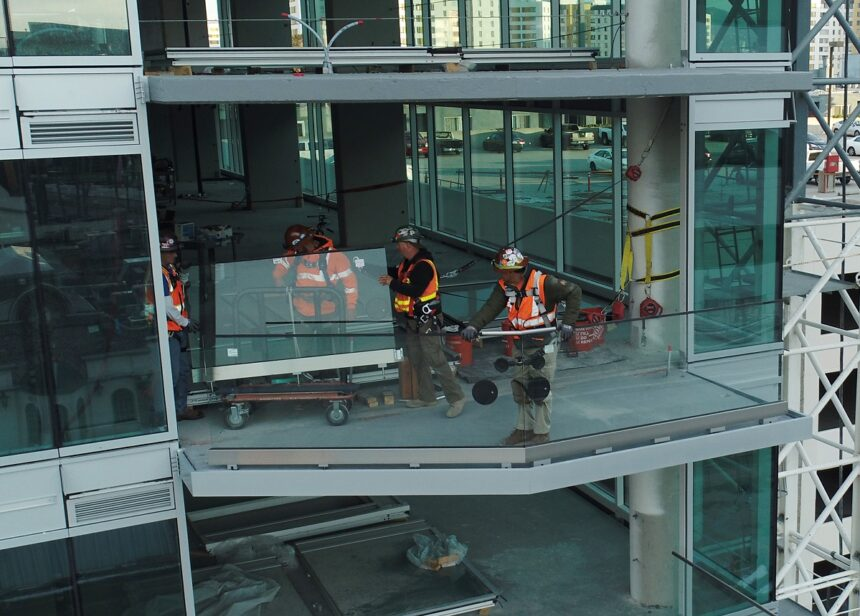Introduction
The glass industry is experiencing continuous evolution, marked by advancements aimed at enhancing the aesthetic appeal, functionality, and sustainability of glass products. These innovations not only address the rising demands for energy efficiency and safety but also redefine the potential of glass in architectural and design contexts. This article explores the latest trends and technologies shaping the future of glass installation in Gig Harbor.
Innovative Materials in Glass Making
Material selection in glass production significantly influences its properties and suitability for diverse applications. Recent developments have expanded beyond traditional glass to include:
- Photovoltaic Glass: Integrates solar cells to generate electricity while functioning as windows or facades, promoting sustainable building practices.
- Switchable Privacy Glass: Utilizes electrical charge to switch between clear and opaque states, offering privacy without curtains or blinds.
Advanced Installation Techniques
As glass capabilities advance, installation techniques evolve to ensure safety and maximize functionality:
- Magnetic Levitation Installation: Employs minimal physical contact to install glass panes, reducing the risk of damage.
- Robot-Assisted Installation: Enhances precision and speed in installations, especially in challenging locations, ensuring perfect alignment.
Environmental Considerations
Modern glass installations prioritize environmental sustainability through innovations such as:
- Energy-Efficient Coatings: Reflect UV rays while transmitting natural light, reducing the need for artificial cooling.
- Recycled Glass Products: Utilizing recycled glass lowers waste and energy consumption in manufacturing new glass.
Impact of Regulatory Changes
Building codes and regulations exert a significant influence on the glass installation industry, emphasizing:
- Enhanced Safety Features: Mandating safety glass installation in critical areas to prevent injuries from accidental breakage.
- Thermal Performance Standards: Requiring improved insulated glass to enhance energy conservation in buildings.
The Role of Glass in Modern Architecture
Glass has transcended its traditional roles, becoming integral to modern architectural design through:
- Structural Glass: Functions as a structural element, enabling transparent design aesthetics with minimal frames.
- Aesthetic Enhancements: Advances in coloring and texturing techniques allow glass to add artistic elements to building exteriors and interiors.
Future Trends in Glass Technology
Anticipated advancements include:
- Self-Healing Glass: Research on glass capable of repairing cracks and chips independently, extending lifespan.
- Energy Generating Glass Facades: Potential for entire building facades to function as solar panels, transforming buildings into energy producers.
Enhancing User Experience through Smart Glass Applications
Smart glass technology offers enhanced privacy, energy efficiency, and user experience through mobile app or voice-controlled opacity adjustments.
Soundproofing with Acoustic Glass
Incorporates multiple layers and interlayers to minimize external noise penetration, ideal for urban environments and residential areas.
Glass in Landscape Architecture
Expanding roles include glass bridges and viewing platforms, offering durability, safety, and aesthetic enhancement to natural landscapes.
Challenges in Large-Scale Installations
Managing structural integrity and logistics remains a challenge in large-scale glass installations, prompting innovations in project management and safety protocols.
Integration of Glass with Other Building Materials
Integration with metals, woods, and concretes requires precise engineering and aesthetic synergy, supported by advanced bonding technologies.
Customization in Glass Manufacturing
Growing demand for bespoke designs prompts manufacturers to offer custom options in shapes, sizes, tints, and textures, fostering creative architectural expressions.
Training and Certification for Glass Installation Professionals
Increasing complexity necessitates specialized training to ensure adherence to installation techniques and safety standards, critical for reliability in modern glass applications.
Conclusion
The glass installation sector is advancing rapidly, driven by innovation and sustainability. These trends not only expand glass’s capabilities in construction but also revolutionize architectural practices. With ongoing innovation, the potential for glass in new applications appears limitless, promising a vibrant future in the construction industry.

Leave a Reply